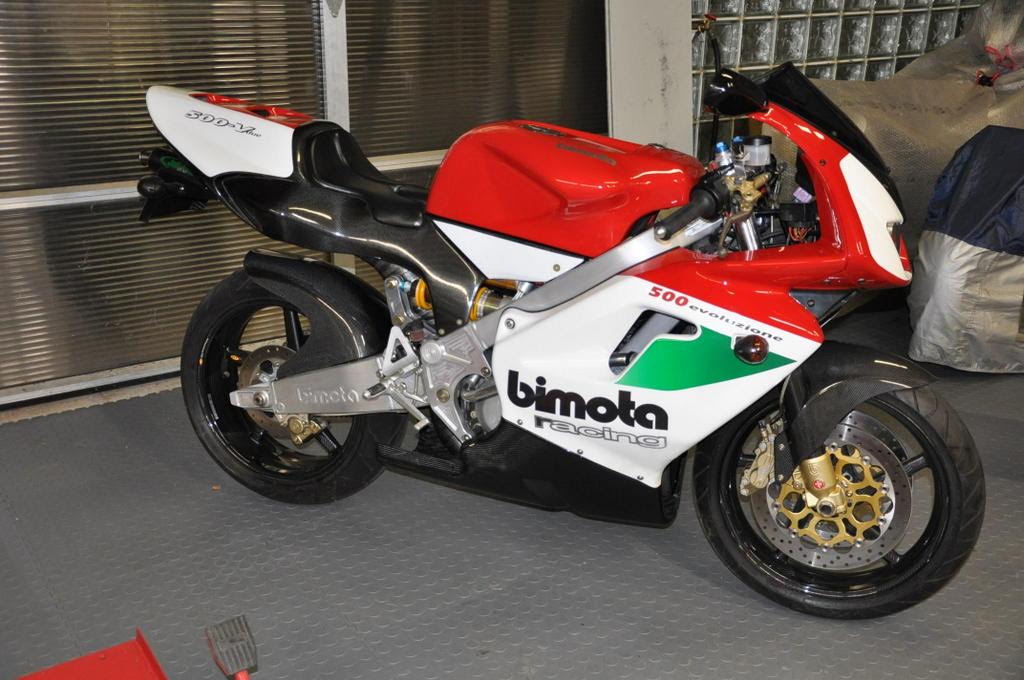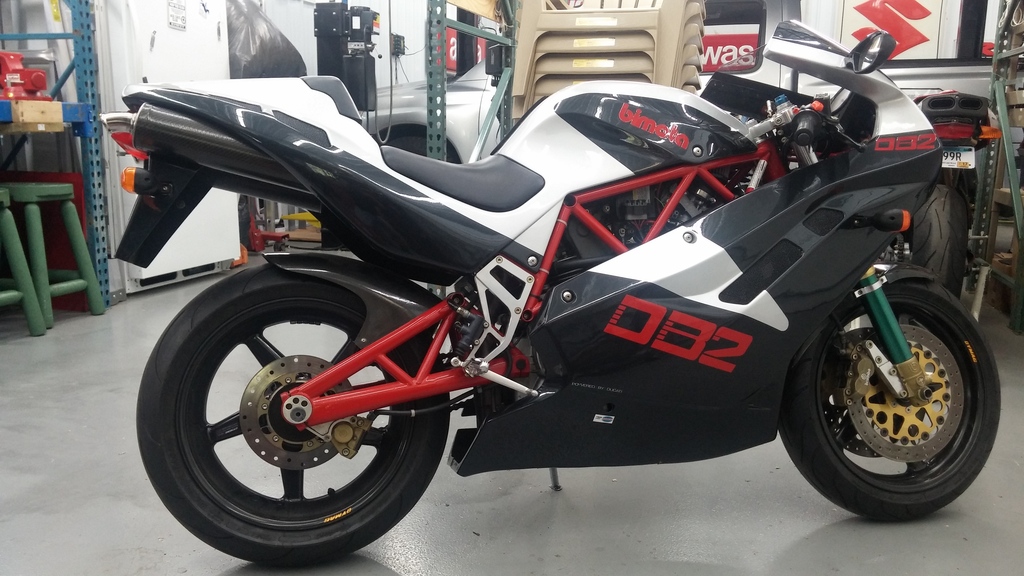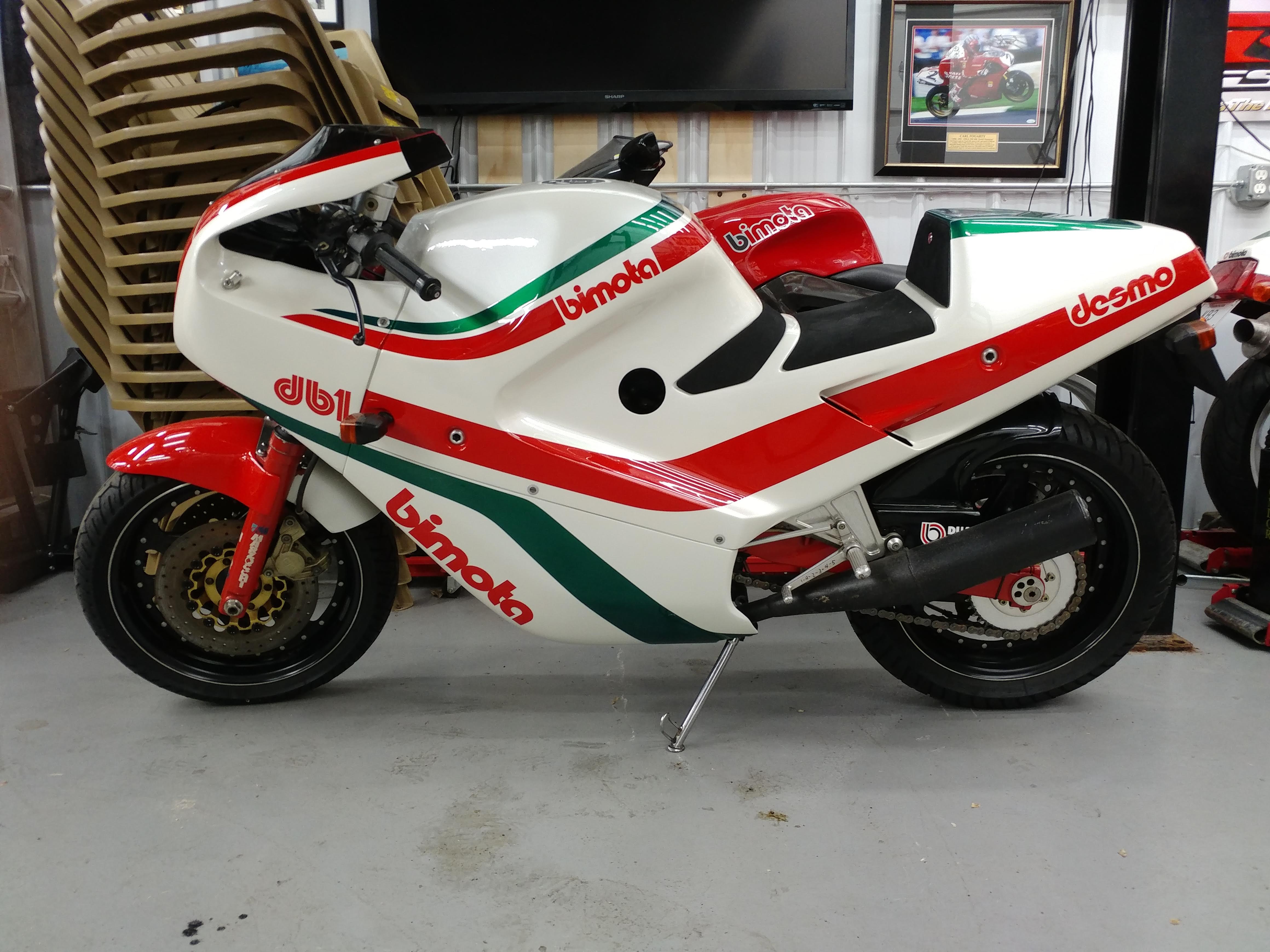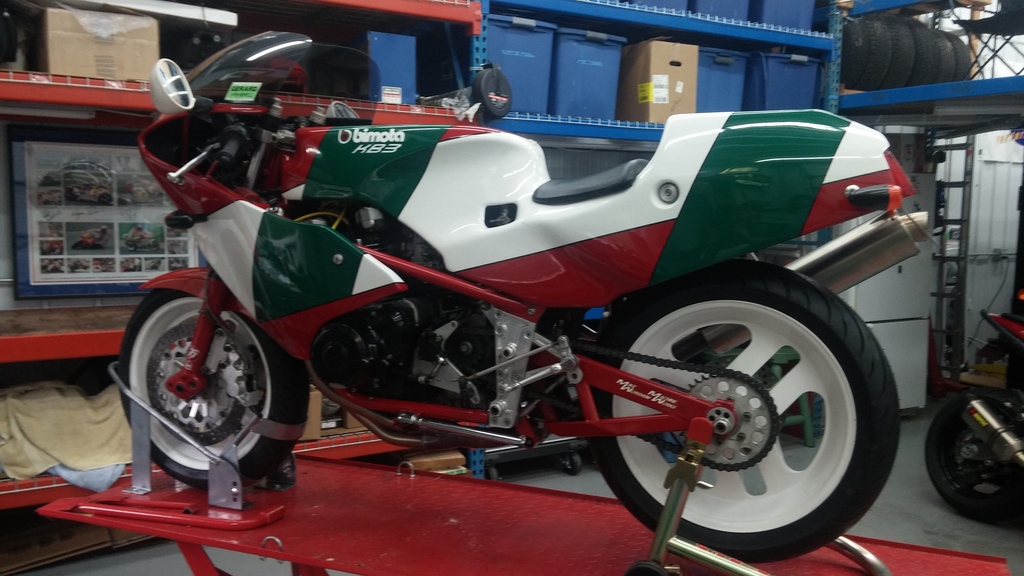
1998 Bimota V Due Evoluzione Finale
Known as the bike that drove Bimota into bankruptcy, the Bimota V Due was the first and only bike Bimota built with an engine of its own design and construction. A 500c V-twin 2 stroke which featured crankcase fuel injection, the V Due was a tremendously ambitious under taking. Not only was it their first […]
1997 Bimota SB6R
Built using a 1997 Suzuki GSXR1100 engine, the Bimota SB6R was 50 lbs. lighter than the donor bike. Using Bimota’s Straight Line Connection frame design, the SB6R had a significantly lower center of gravity too. It was an improved version of the Bimota SB6 which preceded it, featuring better mass concentration and slightly lower weight. […]

1997 Bimota DB2 Edizione Finale
The Bimota DB2 was first introduced in 1993 and produced until 1997. The bike featured the air cooled 90 degree desmo V twin used in the Ducati 900SS in a lighter more compact trellis frame. Weighing about 30 lbs less than a 900SS SP, the DB2 replaced the DB1 and served as a relatively high […]

1985 Bimota DB1
The first Bimota to use a Ducati engine, the Bimota DB1 was a pivotal motorcycle. Featuring the 2 valve per cylinder 90 degree 750cc v-twin from the Ducati 750F1, the bike had a trellis frame, which used the engine as a stressed member to hold the swingarm pivot. Combined with all encompassing bodywork the bike […]

1984 Bimota SB4/KB3 Nick Ienatsch Motorcyclist Magazine Build
The 1984 Bimota SB4 and KB3 shared a common frame and running gear with different engine mounting plates for the Suzuki GS1100 engine or Kawasaki KZ1000 engine. Different subframes were also made to make use of either Suzuki or Kawasaki gauges. With fiberglass bodies, complex small tube space frames, and top notch suspension components, these […]

1998 Bimota V Due Editzione Finale
One of 50 V Due built to the this spec. Jolly Moto exhaust chambers

1998 Bimota V Due Evoluzione Finale
Known as the bike that drove Bimota into bankruptcy, the Bimota V Due was the first and only bike Bimota built with an engine of its own design and construction. A 500c V-twin 2 stroke which featured crankcase fuel injection, the V Due was a tremendously ambitious under taking. Not only was it their first […]
1997 Bimota SB6R
Built using a 1997 Suzuki GSXR1100 engine, the Bimota SB6R was 50 lbs. lighter than the donor bike. Using Bimota’s Straight Line Connection frame design, the SB6R had a significantly lower center of gravity too. It was an improved version of the Bimota SB6 which preceded it, featuring better mass concentration and slightly lower weight. […]

1997 Bimota DB2 Edizione Finale
The Bimota DB2 was first introduced in 1993 and produced until 1997. The bike featured the air cooled 90 degree desmo V twin used in the Ducati 900SS in a lighter more compact trellis frame. Weighing about 30 lbs less than a 900SS SP, the DB2 replaced the DB1 and served as a relatively high […]

1985 Bimota DB1
The first Bimota to use a Ducati engine, the Bimota DB1 was a pivotal motorcycle. Featuring the 2 valve per cylinder 90 degree 750cc v-twin from the Ducati 750F1, the bike had a trellis frame, which used the engine as a stressed member to hold the swingarm pivot. Combined with all encompassing bodywork the bike […]

1984 Bimota SB4/KB3 Nick Ienatsch Motorcyclist Magazine Build
The 1984 Bimota SB4 and KB3 shared a common frame and running gear with different engine mounting plates for the Suzuki GS1100 engine or Kawasaki KZ1000 engine. Different subframes were also made to make use of either Suzuki or Kawasaki gauges. With fiberglass bodies, complex small tube space frames, and top notch suspension components, these […]

1998 Bimota V Due Editzione Finale
One of 50 V Due built to the this spec. Jolly Moto exhaust chambers
